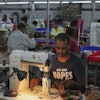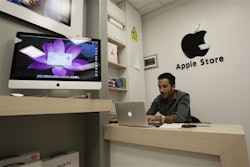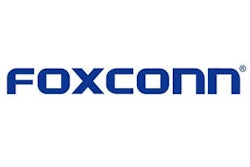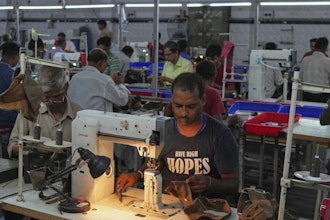On August 22, 2012, the Securities and Exchange Commission (SEC) adopted a rule from the Dodd-Frank Wall Street Reform and Consumer Protection Act that requires public companies to disclose the use of “conflict” minerals in their products. Under the rule, these companies must acknowledge if their supplies of tantalum, tin, gold or tungsten originate from the Democratic Republic of Congo or its nine adjoining countries. The first filing will be required on May 31, 2014, with annual disclosures thereafter.
The regulation is part of an overall “social responsibility” push from various lobbying groups in the U.S., and follows on the footsteps of legislation in California that aims to increase transparency when it comes to manufacturing with child and/or slave labor. These non-governmental organizations want to ensure that the products Americans use are made by companies that live up to the same social standards we often take for granted.
Jeff French, Certified Public Accountant for Grant Thornton, says the SEC rule is a means to use transparency to encourage manufacturers away from conflict minerals, and toward sources that are more ethically and socially responsible. While French says that any public company not properly disclosing their conflict minerals will likely be fined by the SEC, the rule is not a “prohibition statement.” It’s a disclosure, which means that sourcing details that would have otherwise been kept secret are now in the public domain. In many ways, it’s a public relations issue.
The SEC rule states that if a company knows certain minerals did not originate from a conflict region, and that these minerals may not be from scrap or recycled resources, it must disclose its determination, along with a brief description of the inquiry process. By qualifying its products as “DRC conflict free,” the company must then complete the following audit and certification:
- Obtain an independent private sector audit of its Conflict Minerals Report
- Certify that it obtained such an audit.
- Include the audit report as part of the Conflict Minerals Report.
- Identify the auditor.
If a company knows, or has reason to believe, that minerals have originated from the covered countries, and that they are not from scrap or recycled sources, then it must “undertake ‘due diligence’ on the source and chain of custody of its conflict minerals.” It must then undertake the audit and certification process listed above, along with describing the following in its report:
- The products manufactured or contracted to be manufactured that have not been found to be “DRC conflict free.”
- The facilities used to process the conflict minerals in those products.
- The country of origin of the conflict minerals in those products.
- The efforts to determine the mine or location of origin with the greatest possible specificity.
There is also a two-year grace period for companies that are unable to determine the status of their supply chain. More information can be found at the SEC’s website.
While it’s simple enough to get on the phone with direct suppliers, French says that the supply chain begins to fall apart as the complex network of connections reach, ultimately, the mine from where the minerals were taken. French says minerals go from “the mine itself to the smelters, and then brokers, then through the supply chain to various people who might be building sub-assemblies, and so on, before you get to the ultimate product that might be sold.”
Breaking down the supply chain into critical suppliers, and then conducting a risk assessment, will be crucial in pinpointing where minerals come from. French argues that if a company’s supply chain extends into Asia, for example, one will need to increase the level of effort to determine the source of its minerals, which a company may find difficult, as the sourcing scene becomes less clear. If their supply chain is local to the U.S., a company may find it less onerous to determine the source and origin of minerals.
One of the better methods for getting to the bottom of the sourcing equation is to establish guidelines for suppliers. By establishing an internal company policy — one of not using conflict minerals — manufacturers can push those social standards downstream and ensure a higher degree of compliance. Many major U.S. manufacturers, such as Apple, already have extensive supplier guidelines, but those might need a little expanding in light of the new conflict minerals rule. These guidelines could even extend to conducting regular audits at the supplier to ensure compliance.
And manufacturers shouldn’t think they’re safe because they’re a private company. French says, “If there is a private company and one of their large customers is a public company, I would definitely recommend they begin looking into this issue themselves.” Sooner or later, that public company will come knocking on their door, asking about where they get their materials, and whether or not they come from conflict mines. French says, “Although they won’t have any disclosure from a public standpoint, they will have a disclosure statement to their customer.” That customer may even want to start taking a look around a manufacturer’s facilities on a regular basis.
Either way, French thinks “there’s going to be a lot of information technology costs associated with this,” in terms of leveraging big data and supply chain software to help better understand the sourcing picture. He also thinks that as more major manufacturers try to move toward conflict-free minerals, prices of those mined ethically could rise, leading to higher inbound costs for all companies.
In addition, new supplier relationships will likely become a slightly more complex issue. French recommends that manufacturers screen potential suppliers for “social responsibilities” like using conflict minerals before they start doing business with them. This will make future compliance to the SEC rule easier to swallow.
And even though the exact penalties for violating the new rule are unclear — the first reports aren’t due for until May 2014 — French says that more social responsibility legislations could be on the way in the future. The only clear picture is, as with most regulations, the cost of compliance doesn’t get any cheaper the longer one delays.
More information on the SEC rule can be found at http://sec.gov.
Jeff French is an audit partner and the Wisconsin Audit Practice Leader for Grant Thornton. Jeff has over 25 years in public accounting experience, and has served companies in the manufacturing, distribution, service and technology industries. His business experience includes acting as the lead client service partner on a broad range of public and private clients, from start-ups to large corporations.























